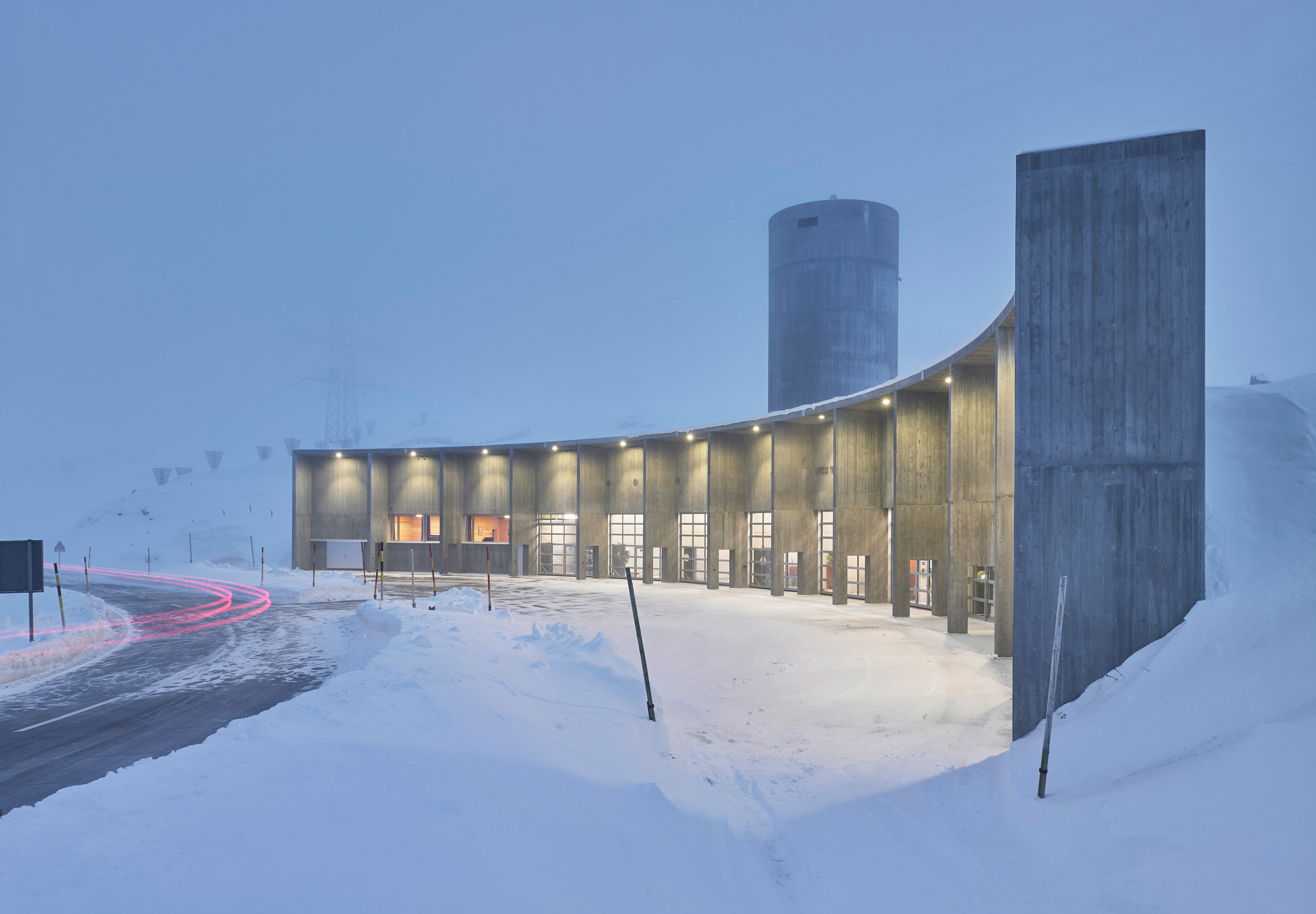Bernina Pass Maintenance Base in Grisons (Switzerland)
Bearth & DeplazesThe Maintenance Base at the Bernina Pass is used for clearing snow from the road during the winter season. Architecturally, it is one of the “functional buildings” of the Cantonal Civil Engineering Office of the Canton of Grisons. In this context, functional buildings are essential infrastructure that cannot be dispensed with and, therefore, must be constructed as cost-effectively as possible.
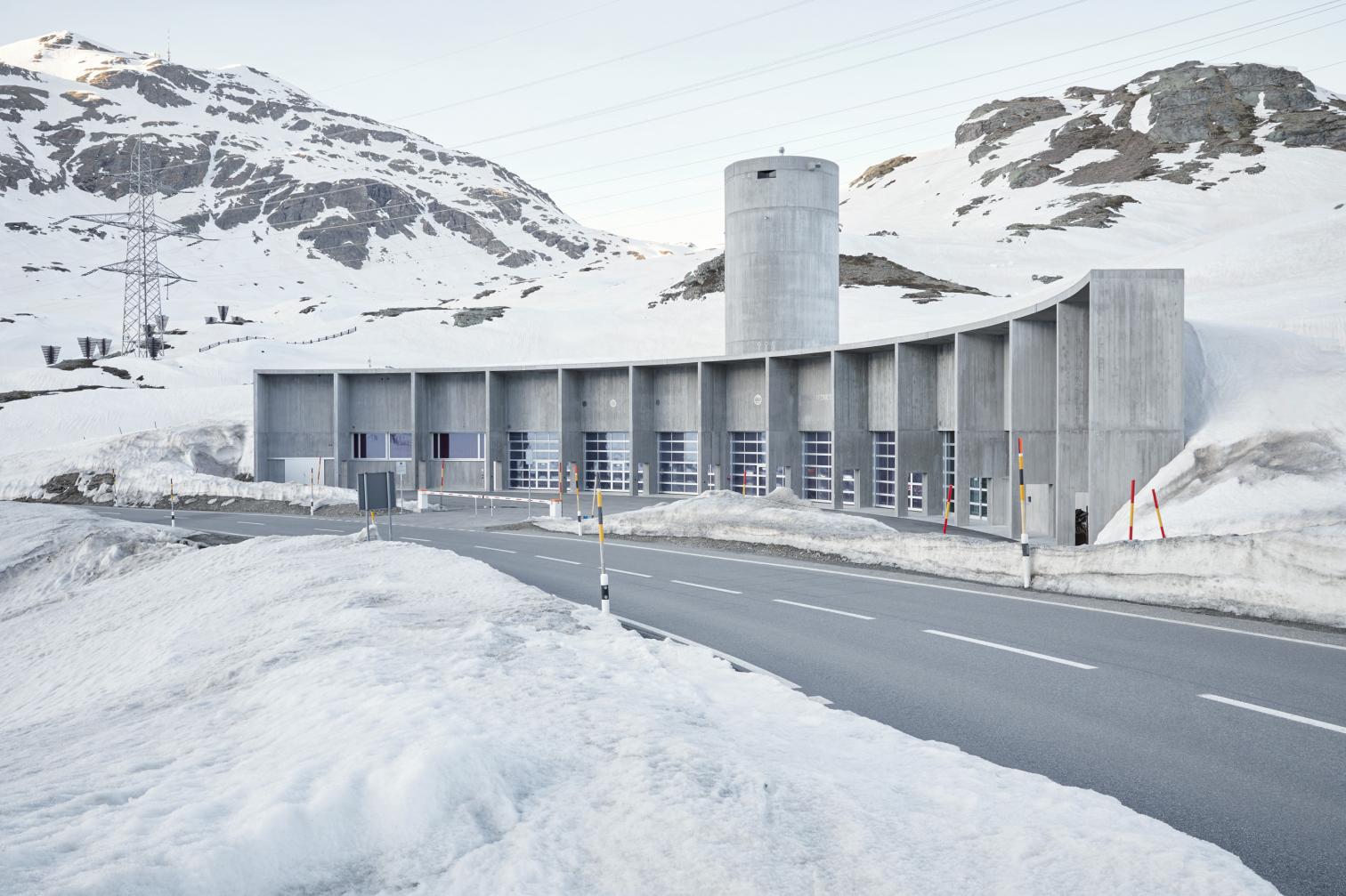
The alpine location of the base facilitates snow removal logistics and local meteorological observation. However, on-site, one is immersed in a vast natural and climatic landscape with almost Arctic characteristics. The effects of global warming are clearly visible: melting glaciers, rockfalls, landslides... the permafrost.
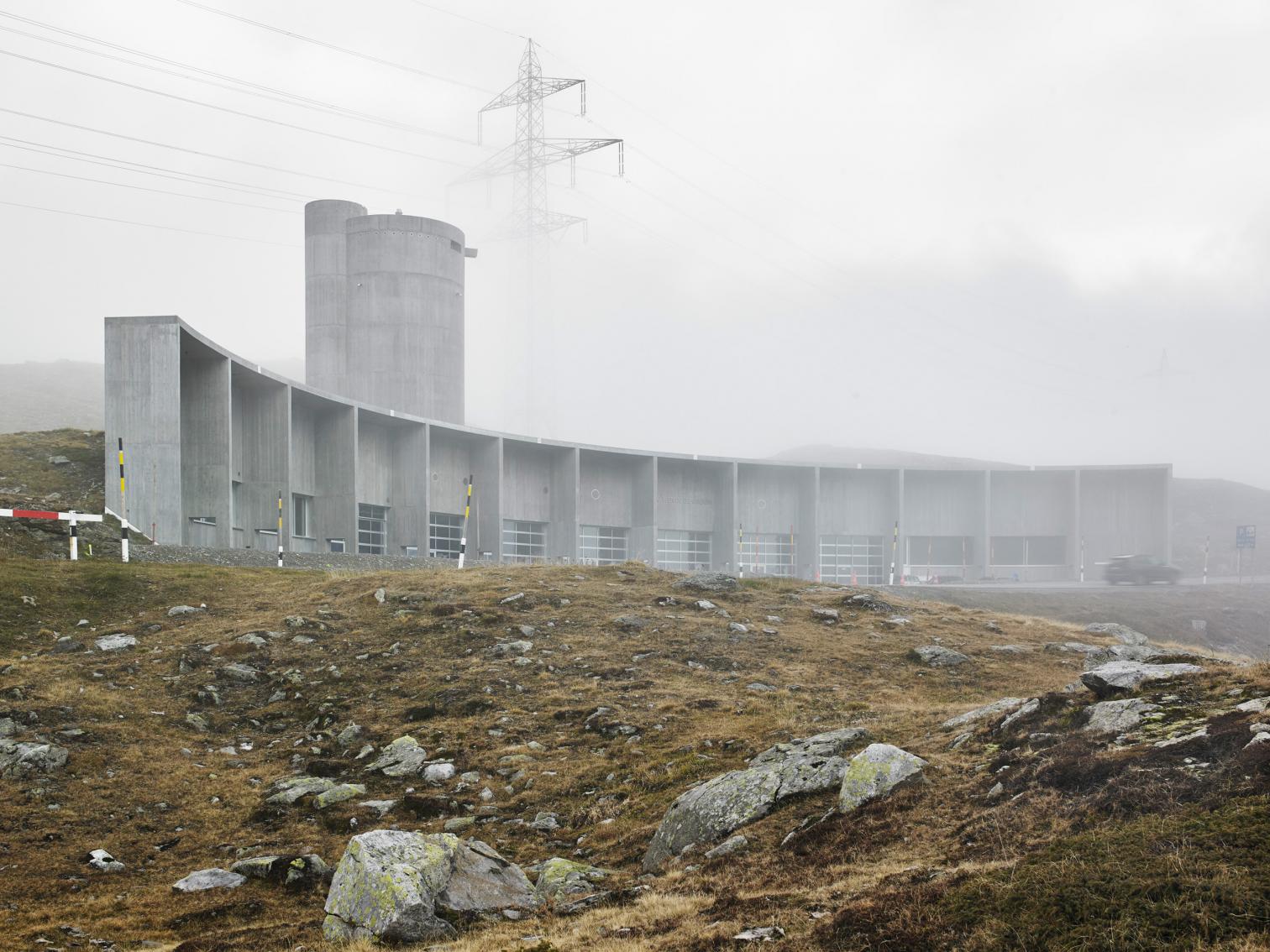
The Bernina Pass only gained significance as a north-south trade route in later centuries, following the occupation of the Valtellina by ancient Raetia, which brought Veneto within reach and initiated a thriving north-south trade network.
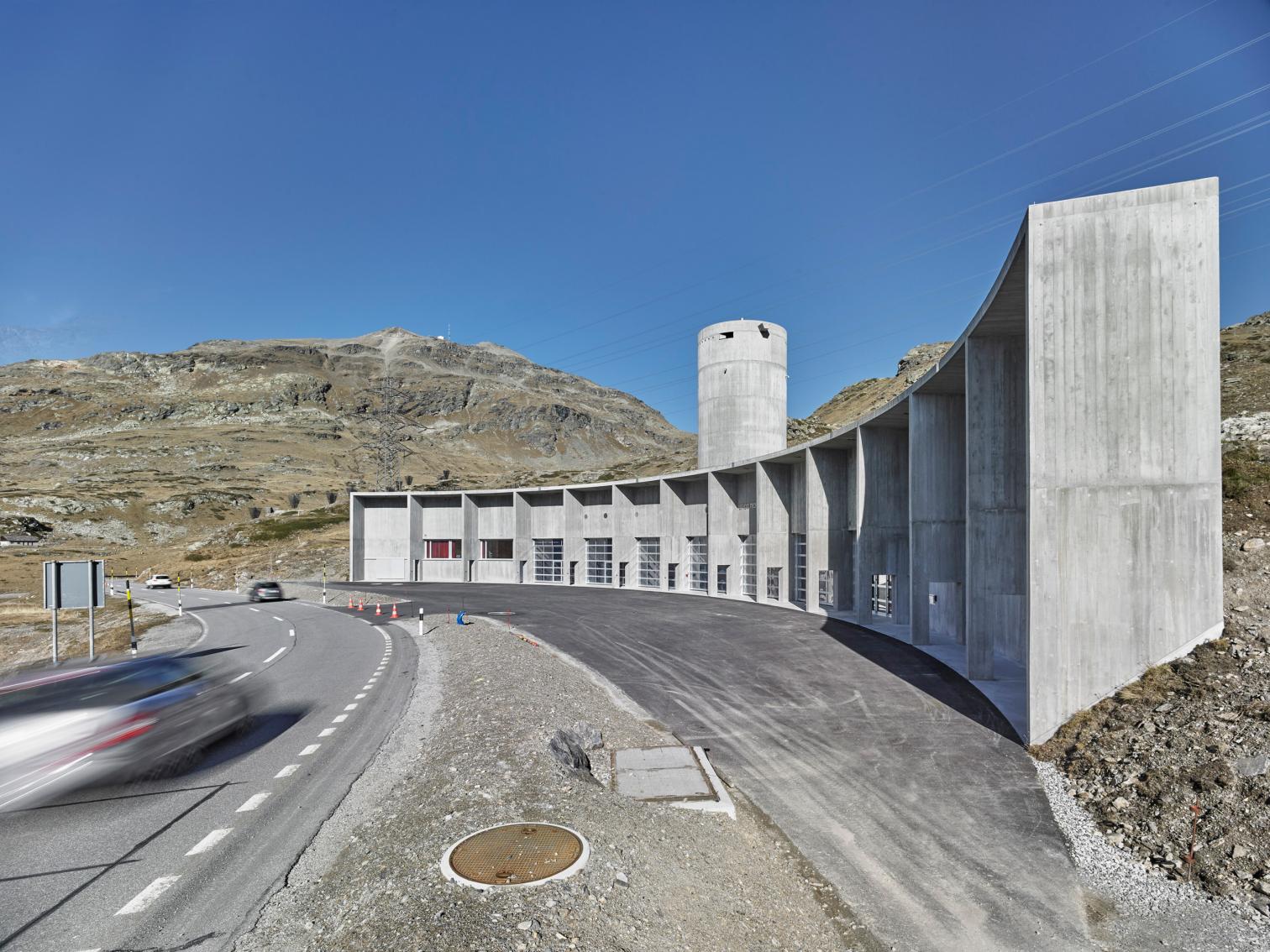
Since then, the global infrastructure has become even more apparent across the barren landscape of the pass: Lake Bianco has been transformed into a reservoir, High-voltage power lines cut across the pass, Military fortifications, the Rhaetian Railway, the highway, and directional antennas mark human intervention.
The Bernina Pass has become a cultural and commercial landscape, shaped by human activity.
While the pass itself serves as an ideal observation area, the Maintenance Base functions as an observatory. On the surface, the base ensures year-round road accessibility for motorists—regardless of weather conditions—while also monitoring environmental impacts.
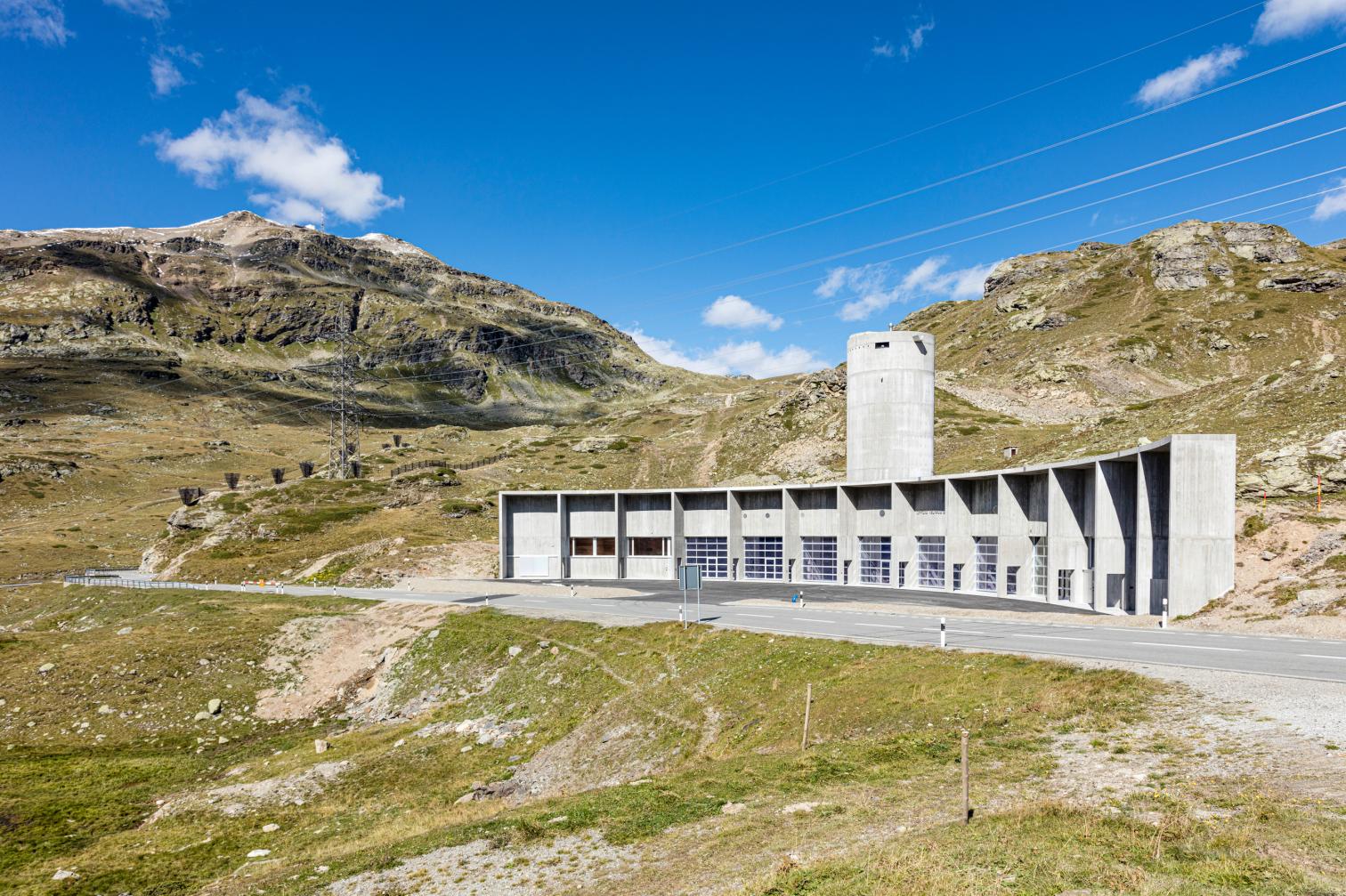
Only the building’s extremities are visible, while its large-scale structure remains hidden beneath the grassy terrain—"out of sight, out of mind." It evokes images of a stranded submarine or an archaeological excavation, where enigmatic fragments seem to emerge from erosion: a silent cylindrical block and a curved shield. Is it Land Art, a monument, an abstract entity, or a decorated utility shed?
At the top of the tower, a camera obscura—an unintended quirk by the architects—becomes the conceptual centerpiece, offering a play on perspectives and visions. This dark, seemingly useless space was created as a response to the unpredictability of future winters—a reserve chamber for additional salt and ice.
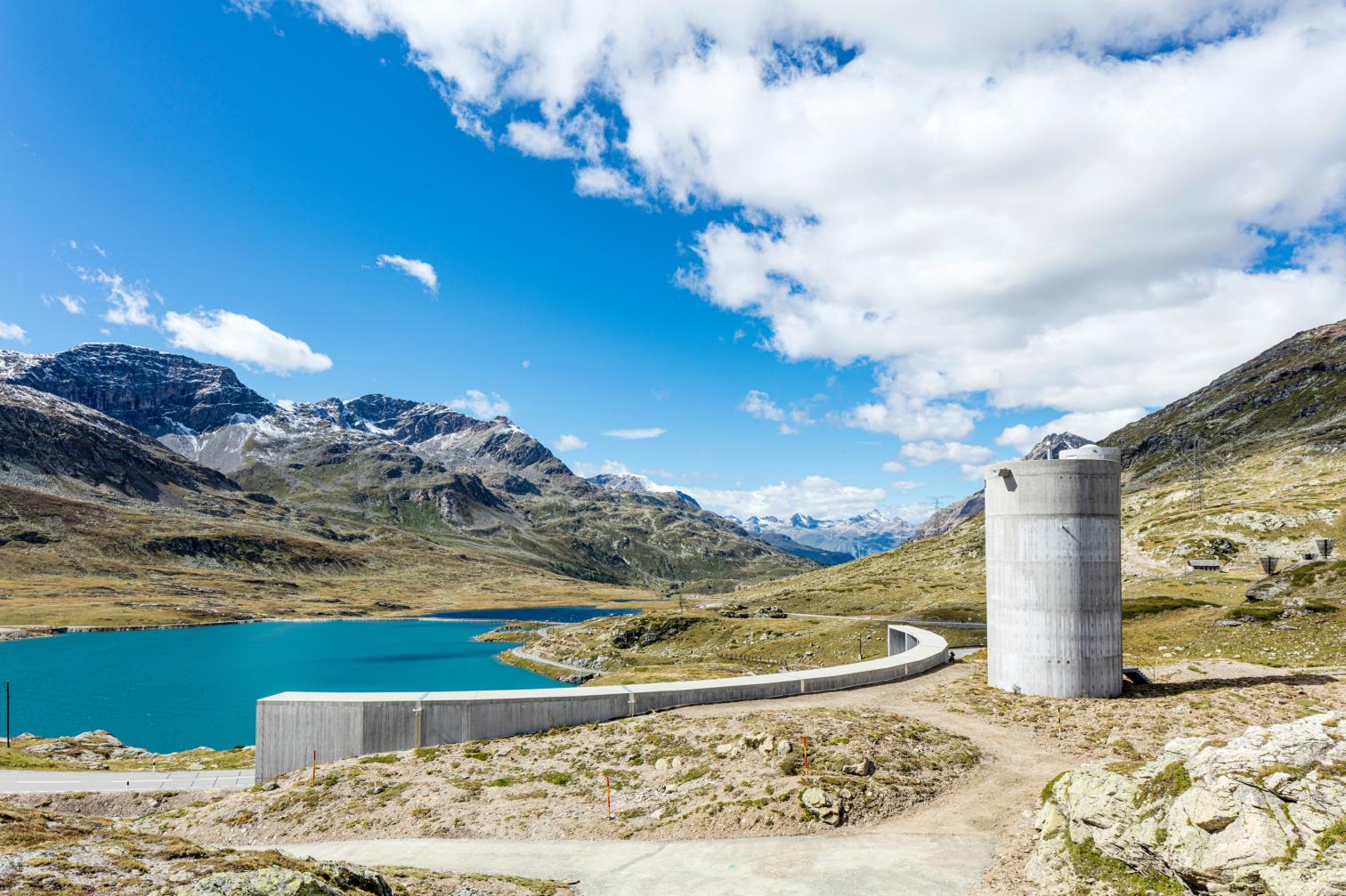
A tiny 18 mm aperture connects the chamber to the outside world, allowing the Cambrena Massif to project itself inside. The mountain’s powerful, unfiltered light beam penetrates the chamber—an inconceivable, almost mystical vision—pure physics, without technological mediation: magical realism.
In an era defined by global digital interconnectedness, this raw, physical intervention feels like a deliberate disruption—an irritation that defies contemporary expectations.
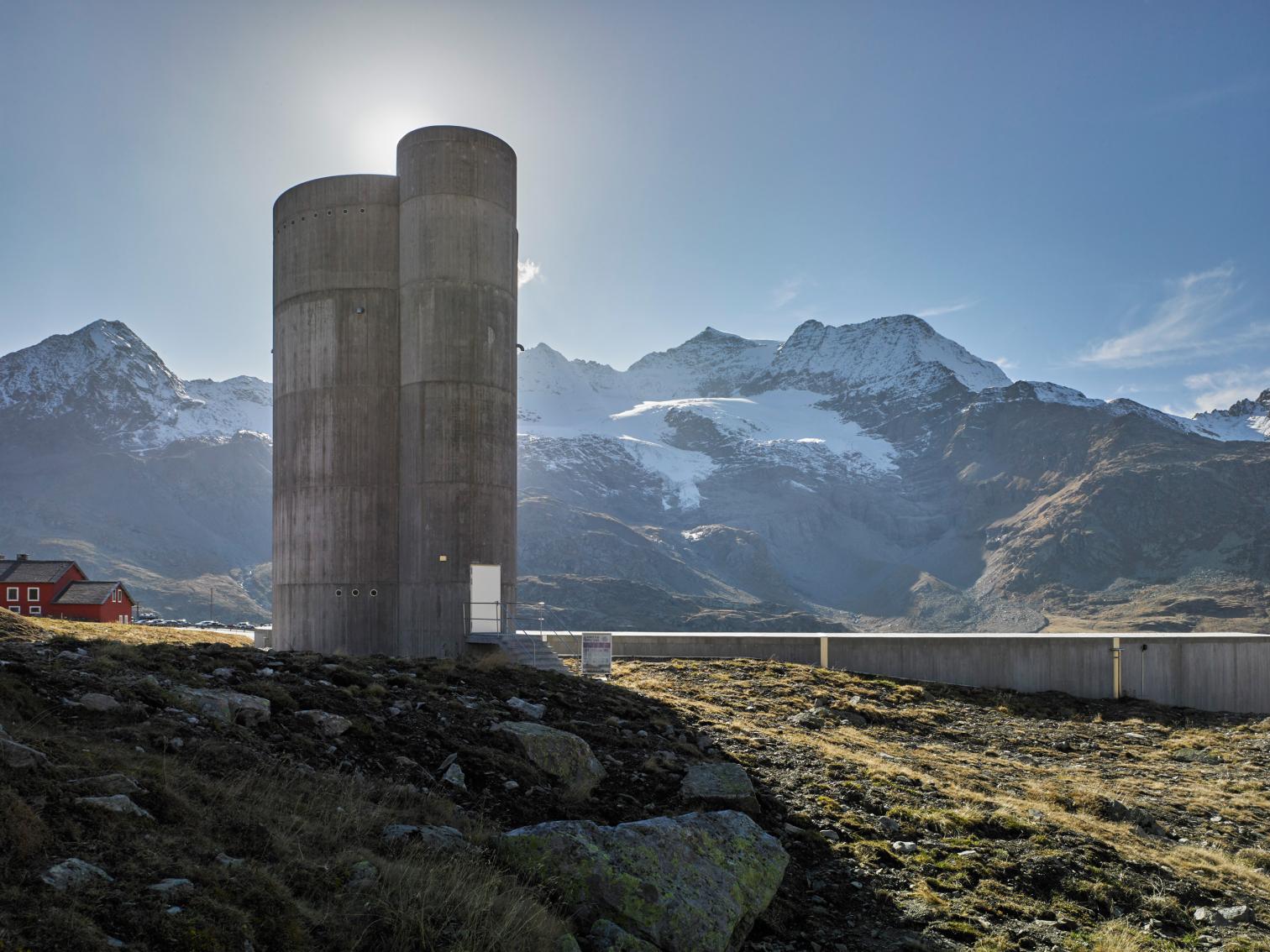

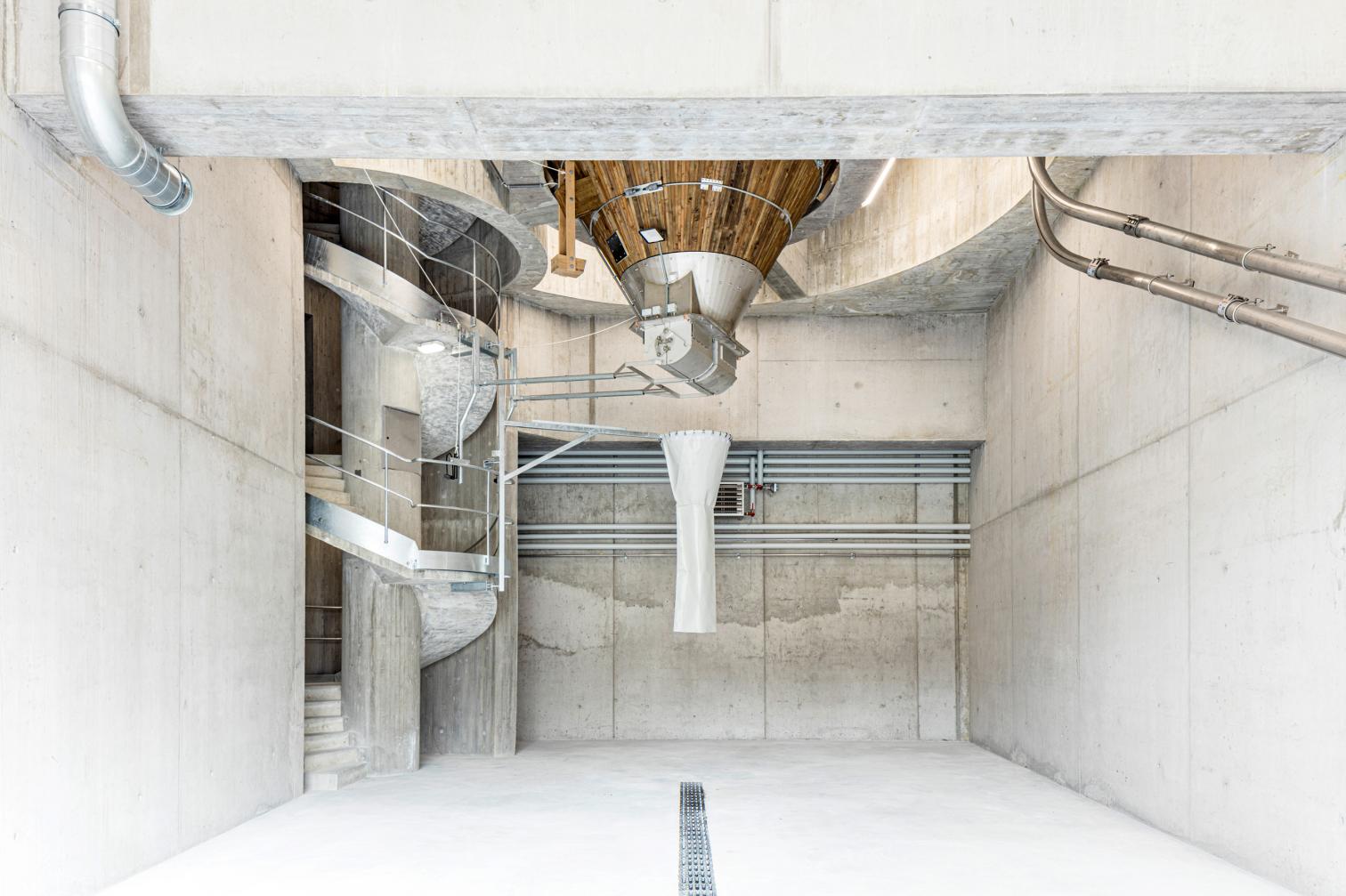

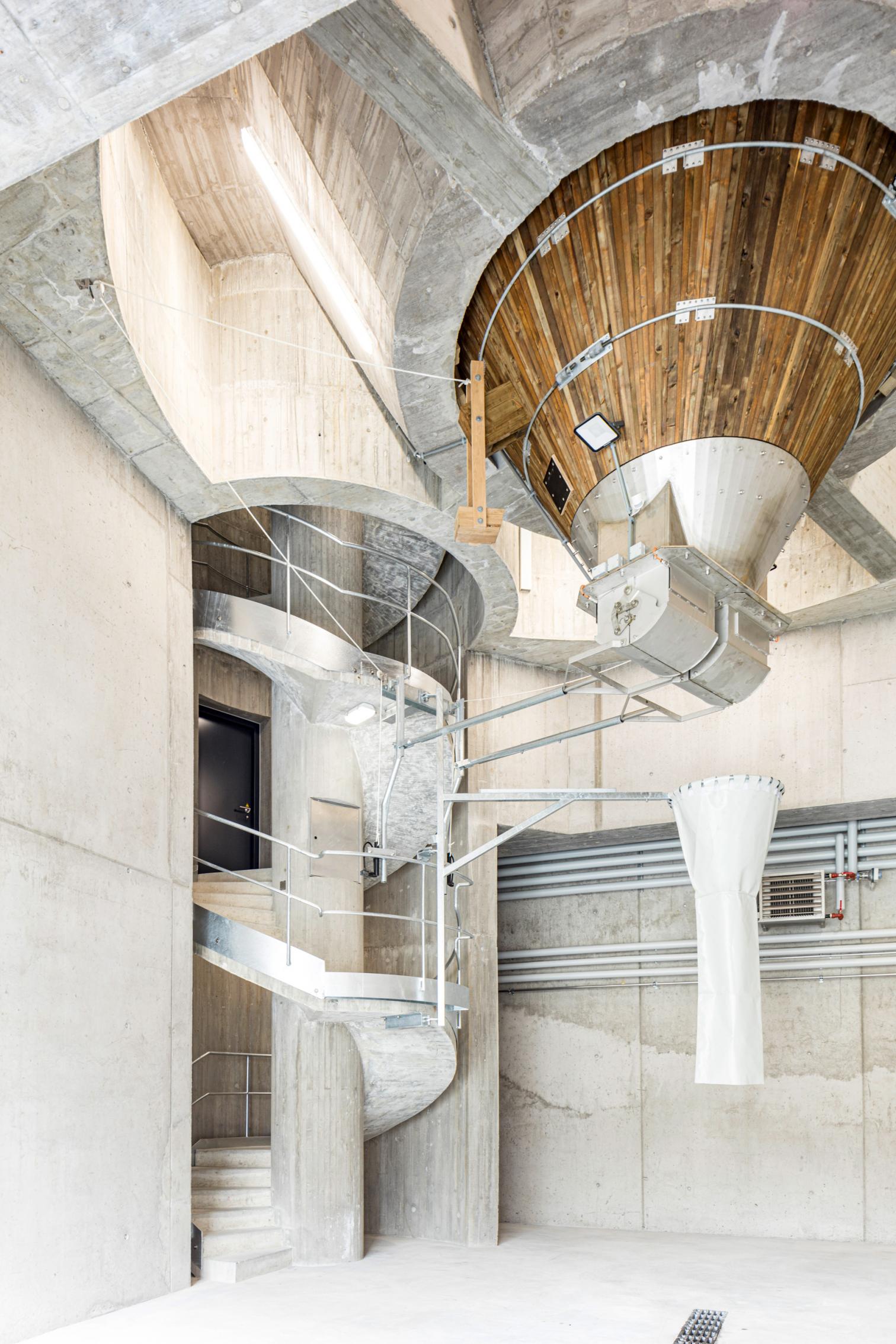
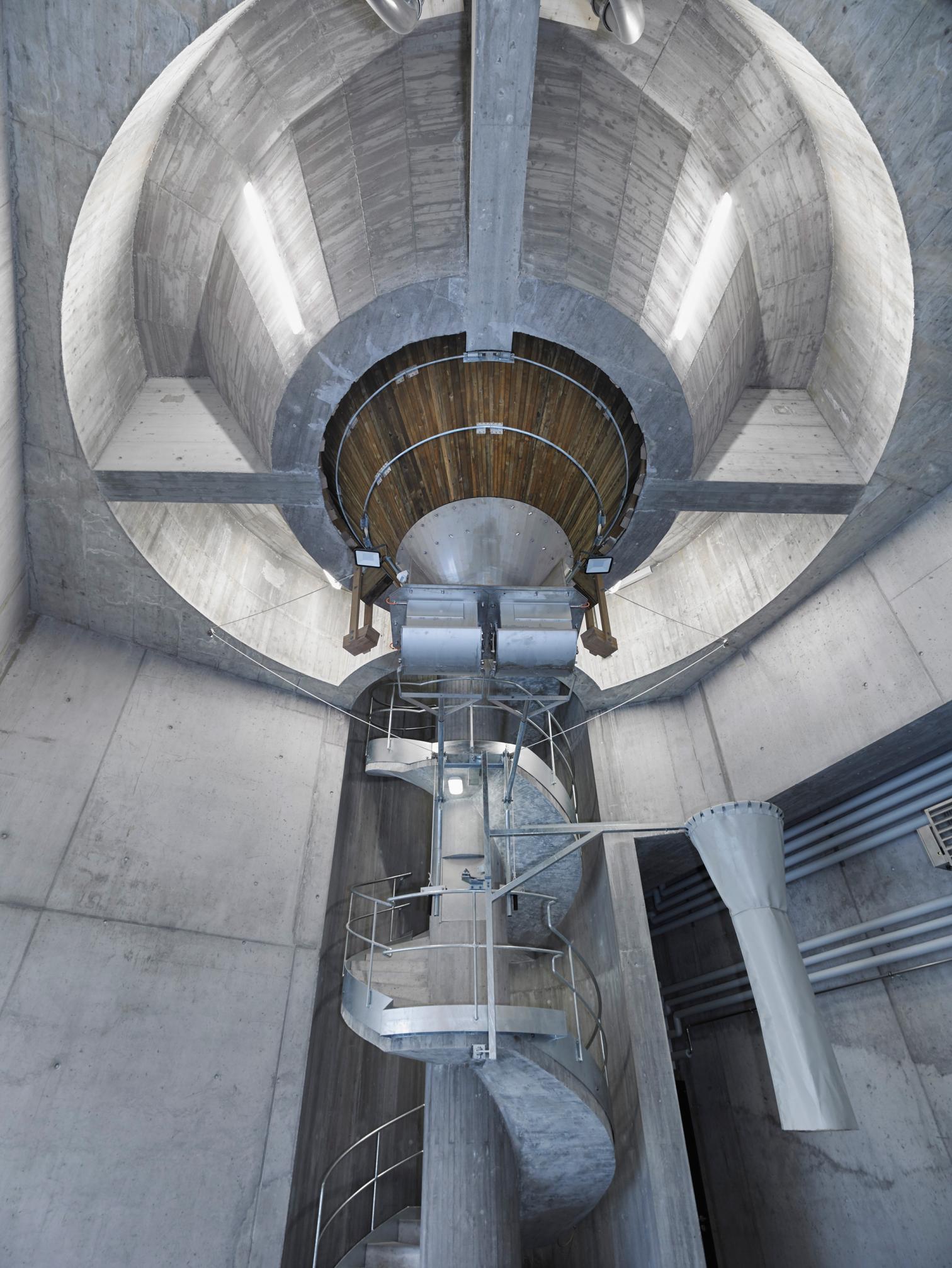
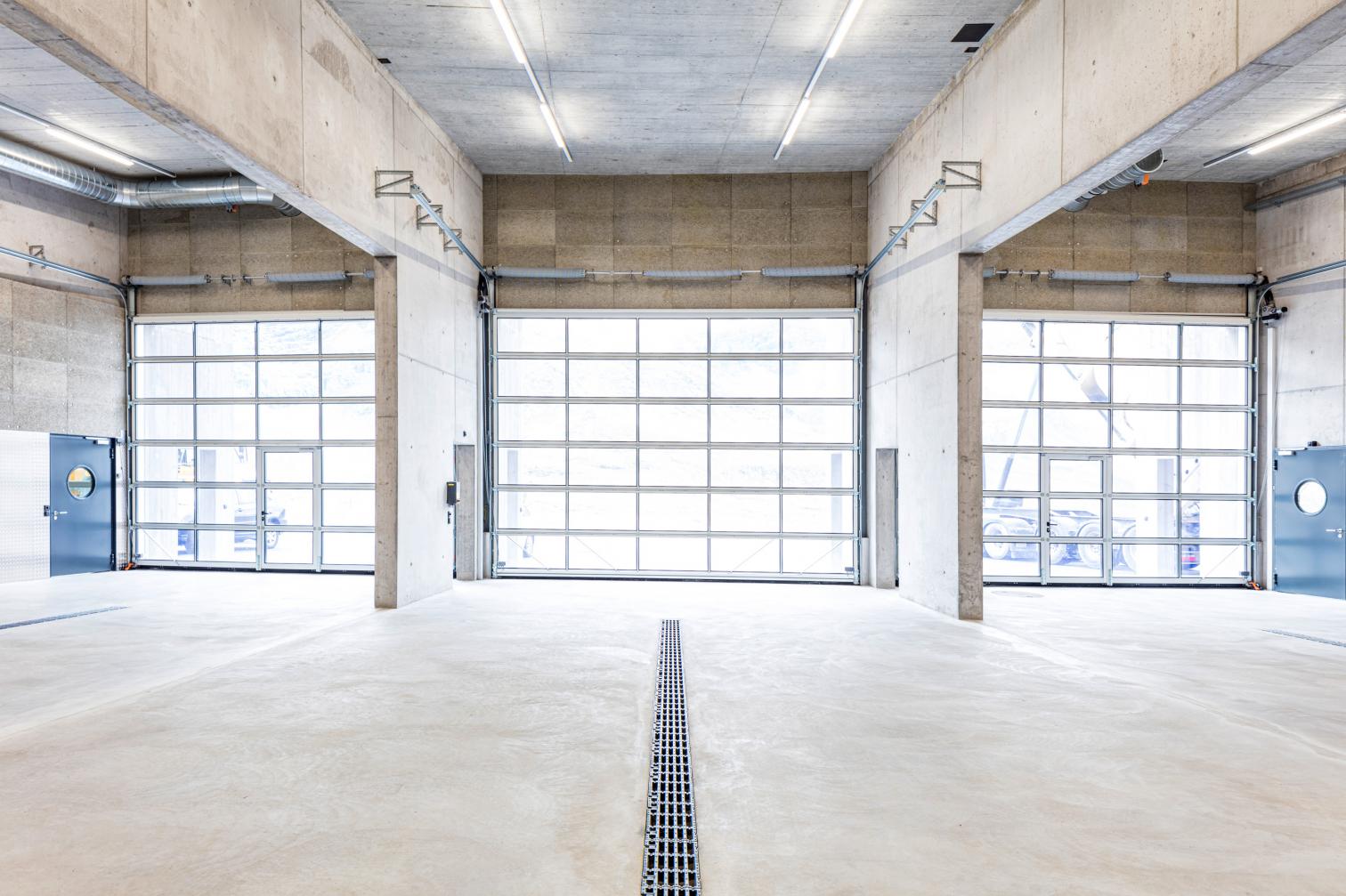
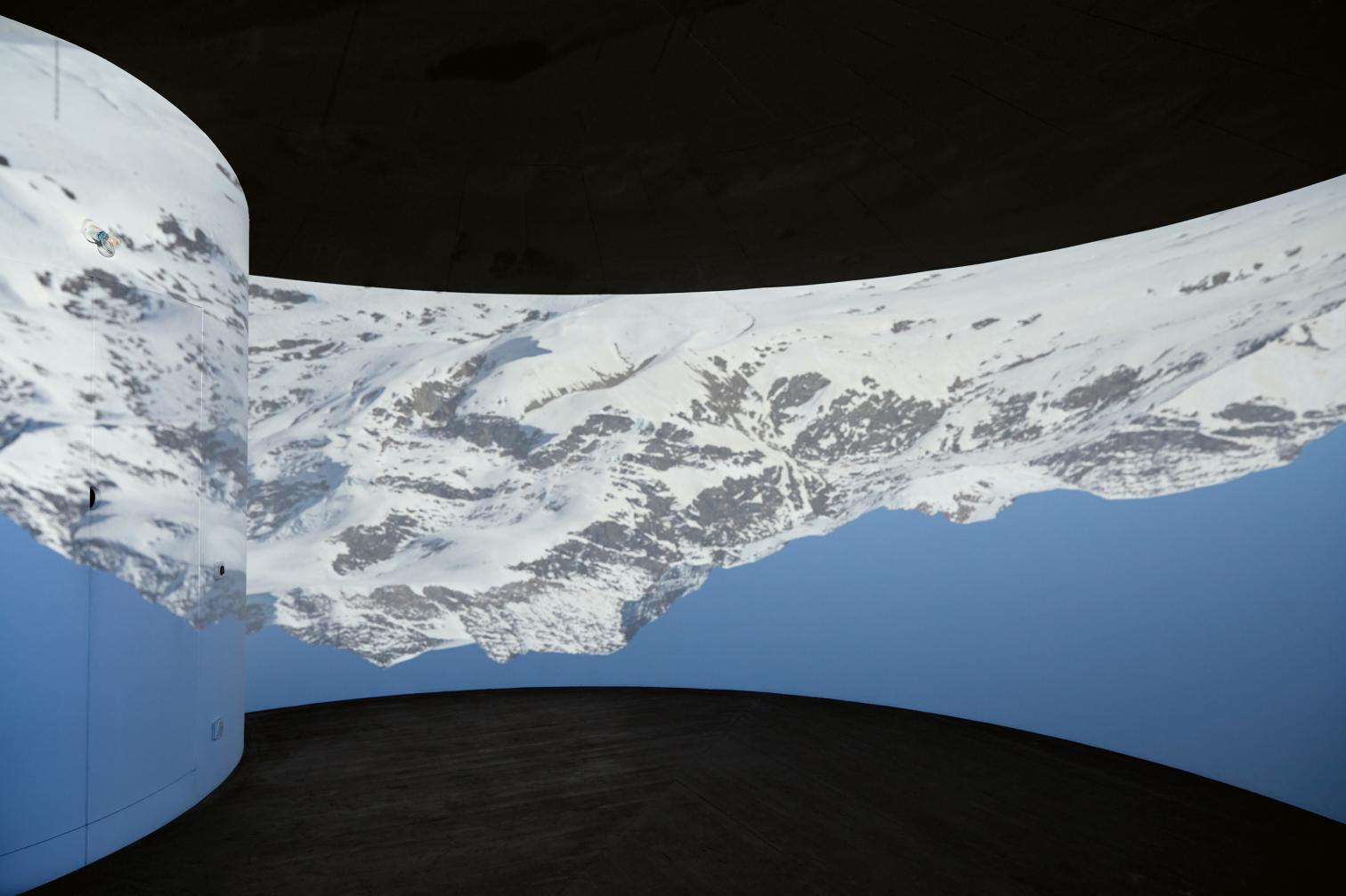
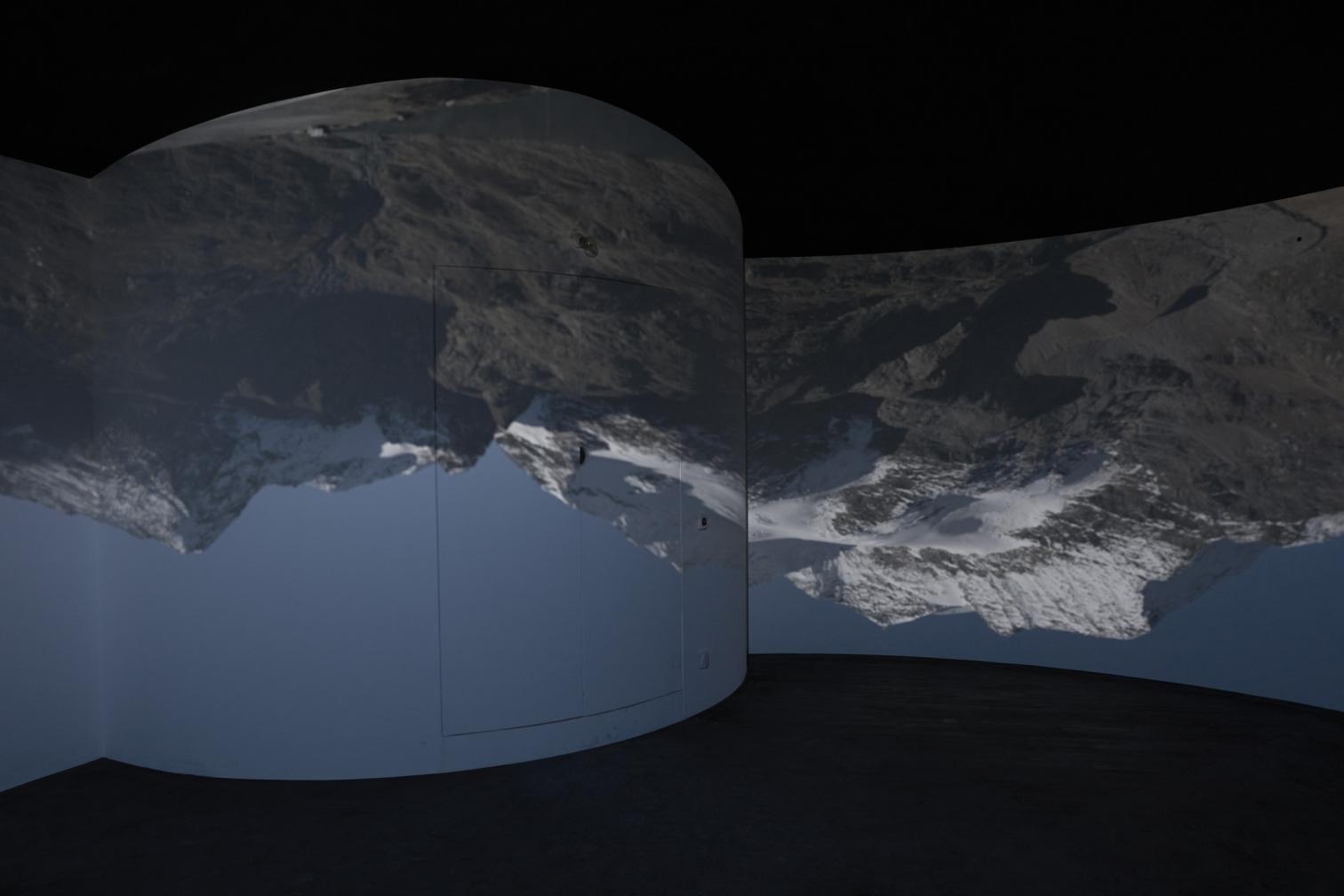
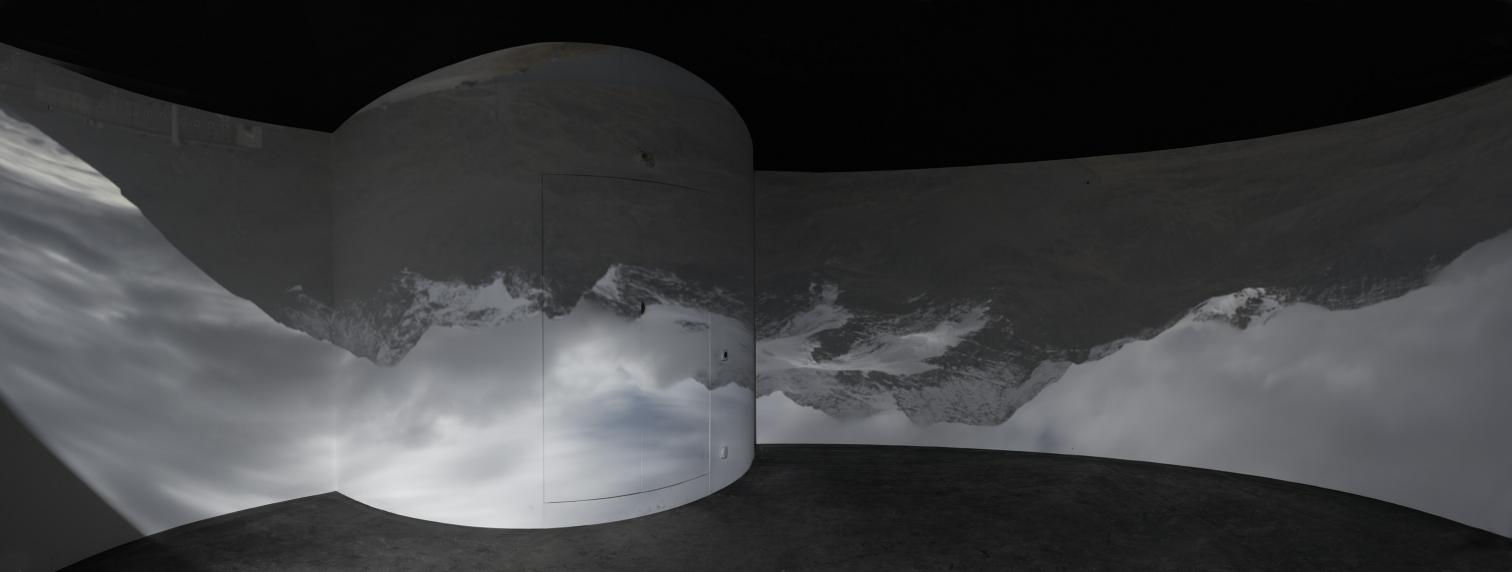
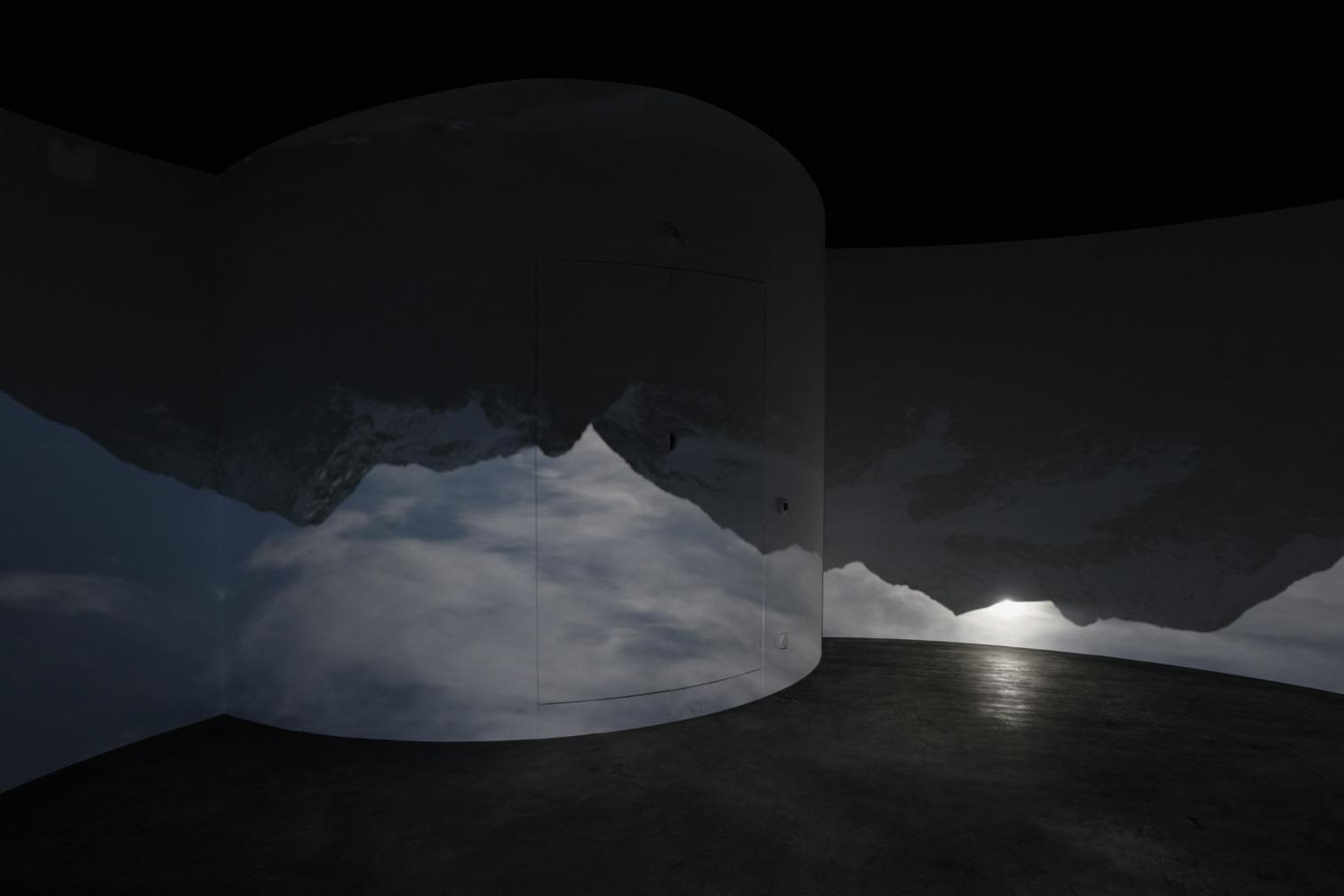
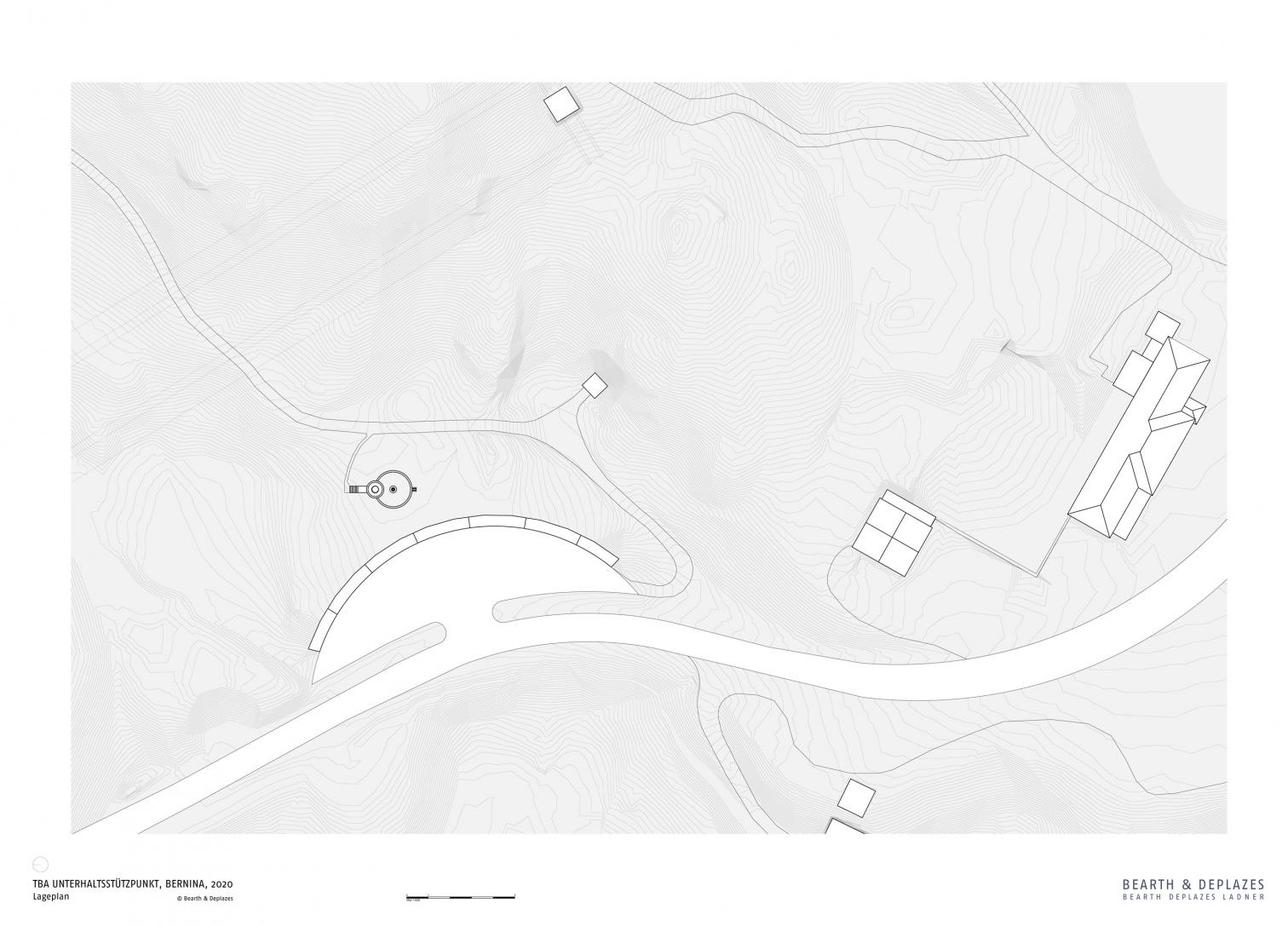
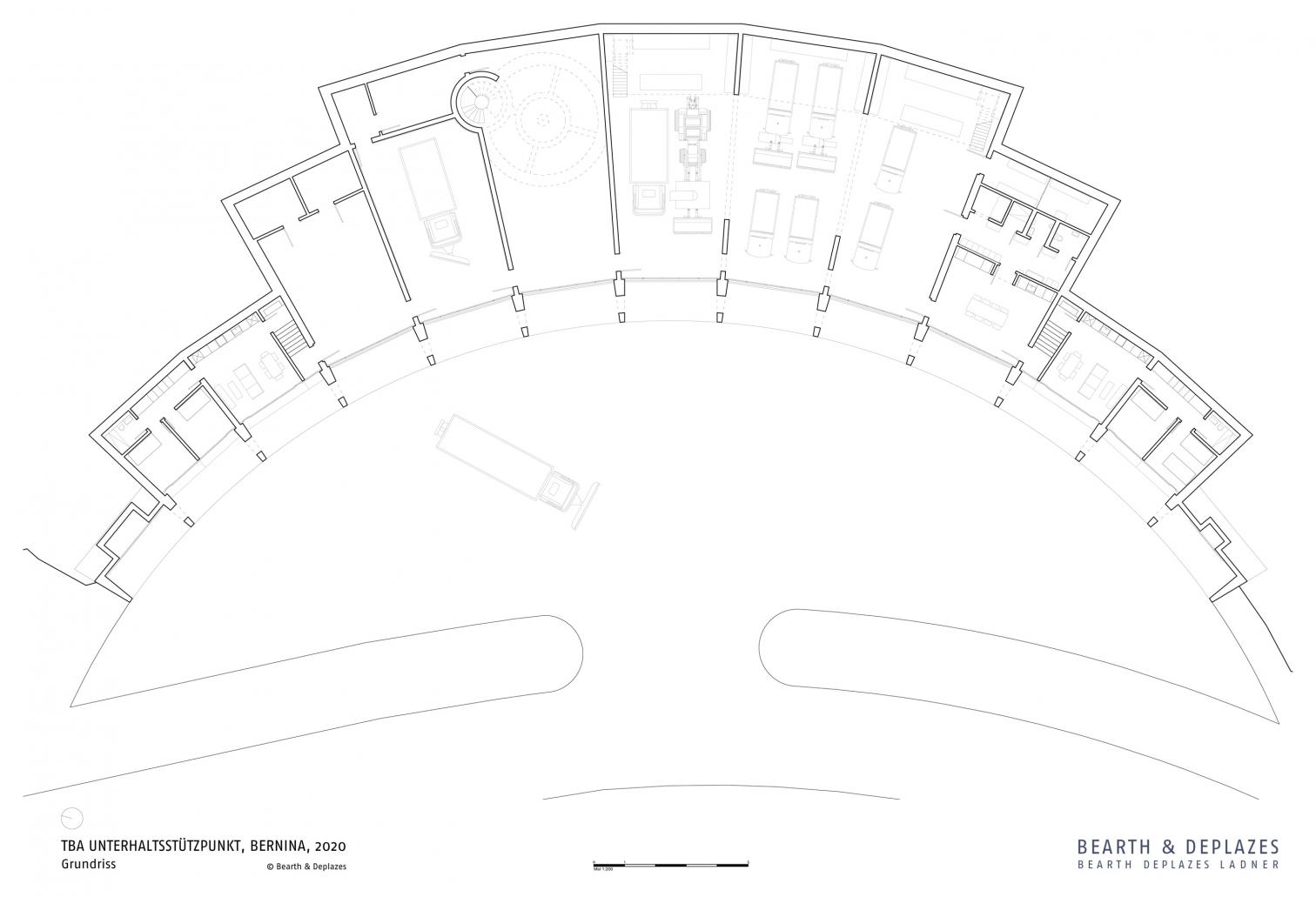
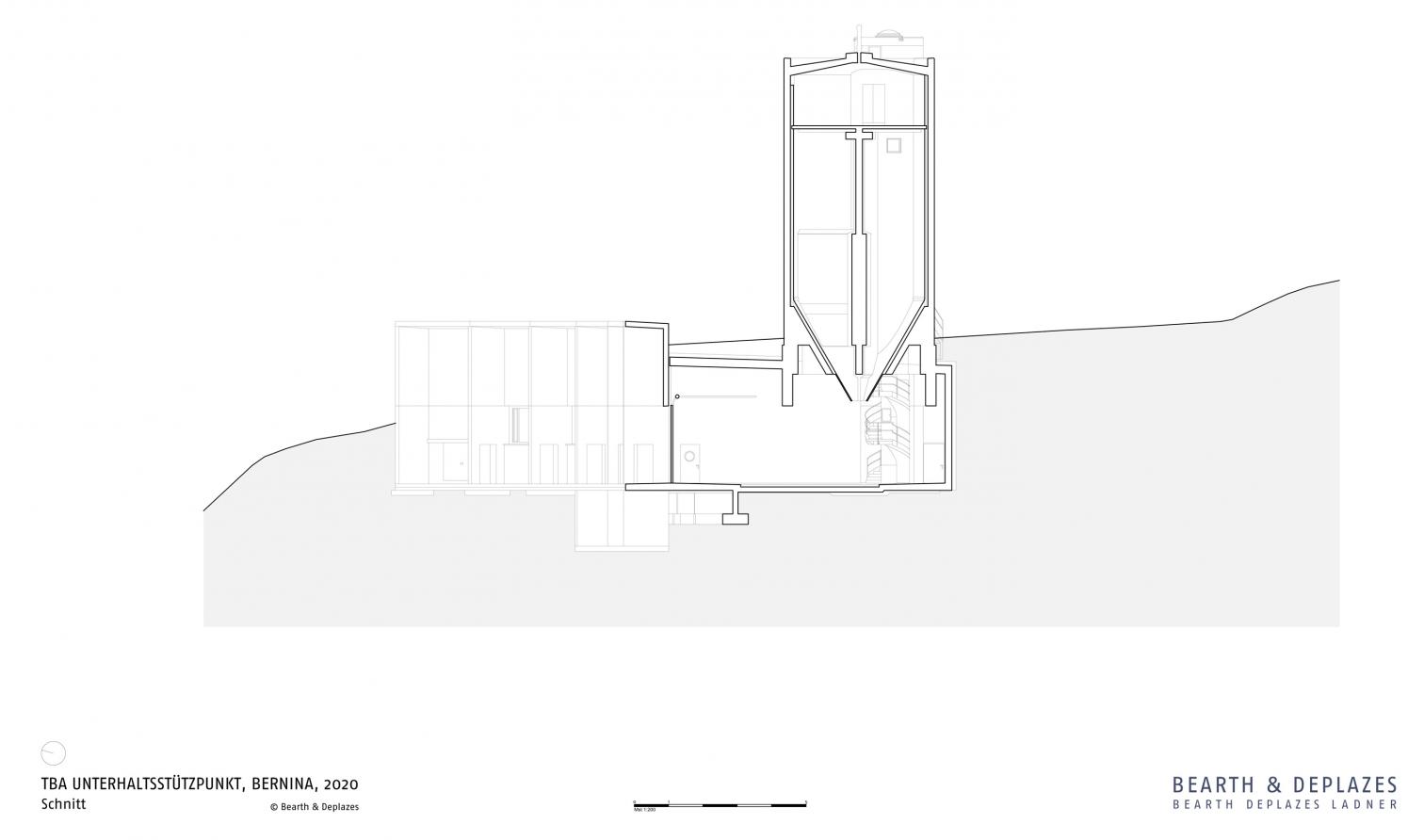
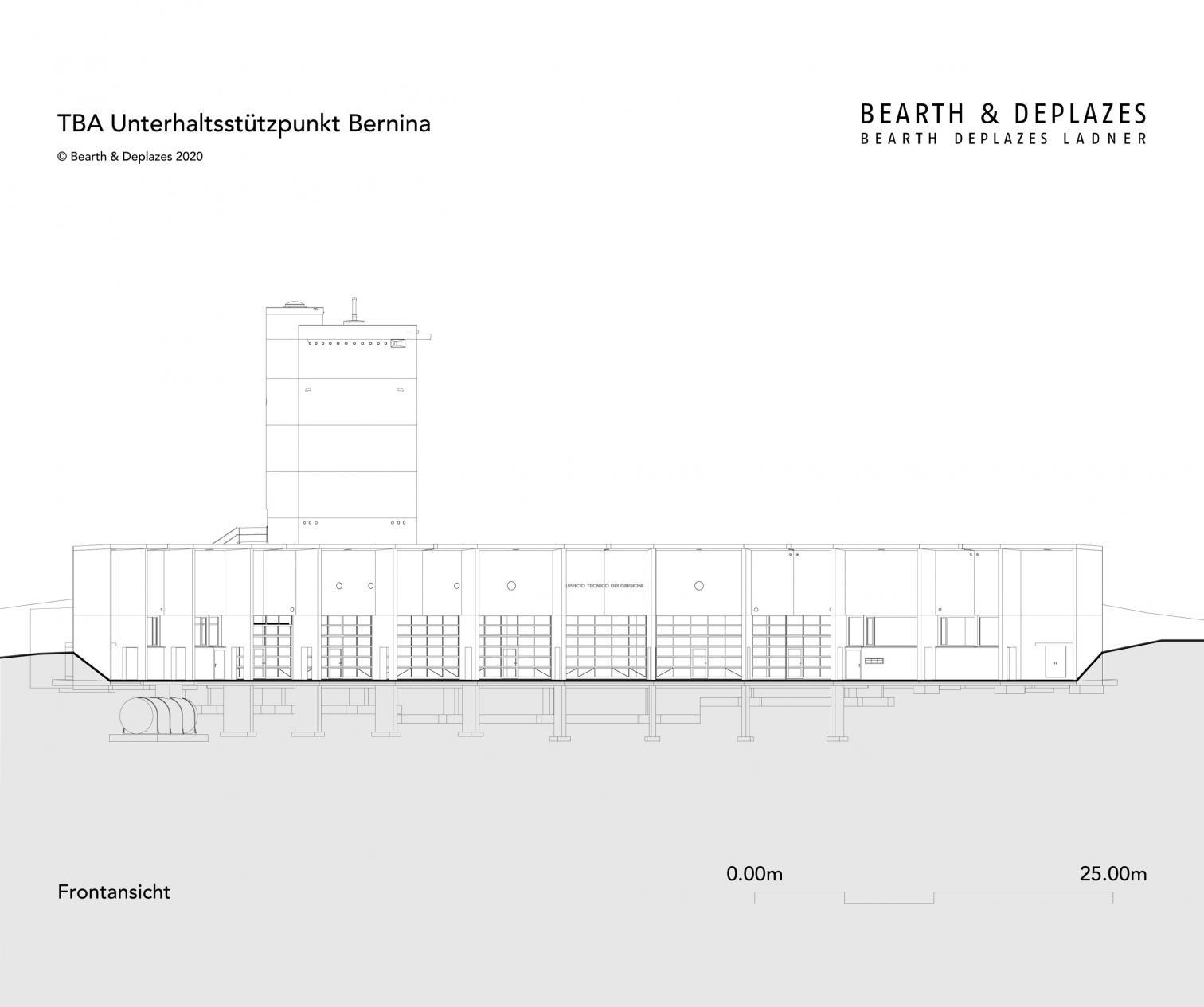
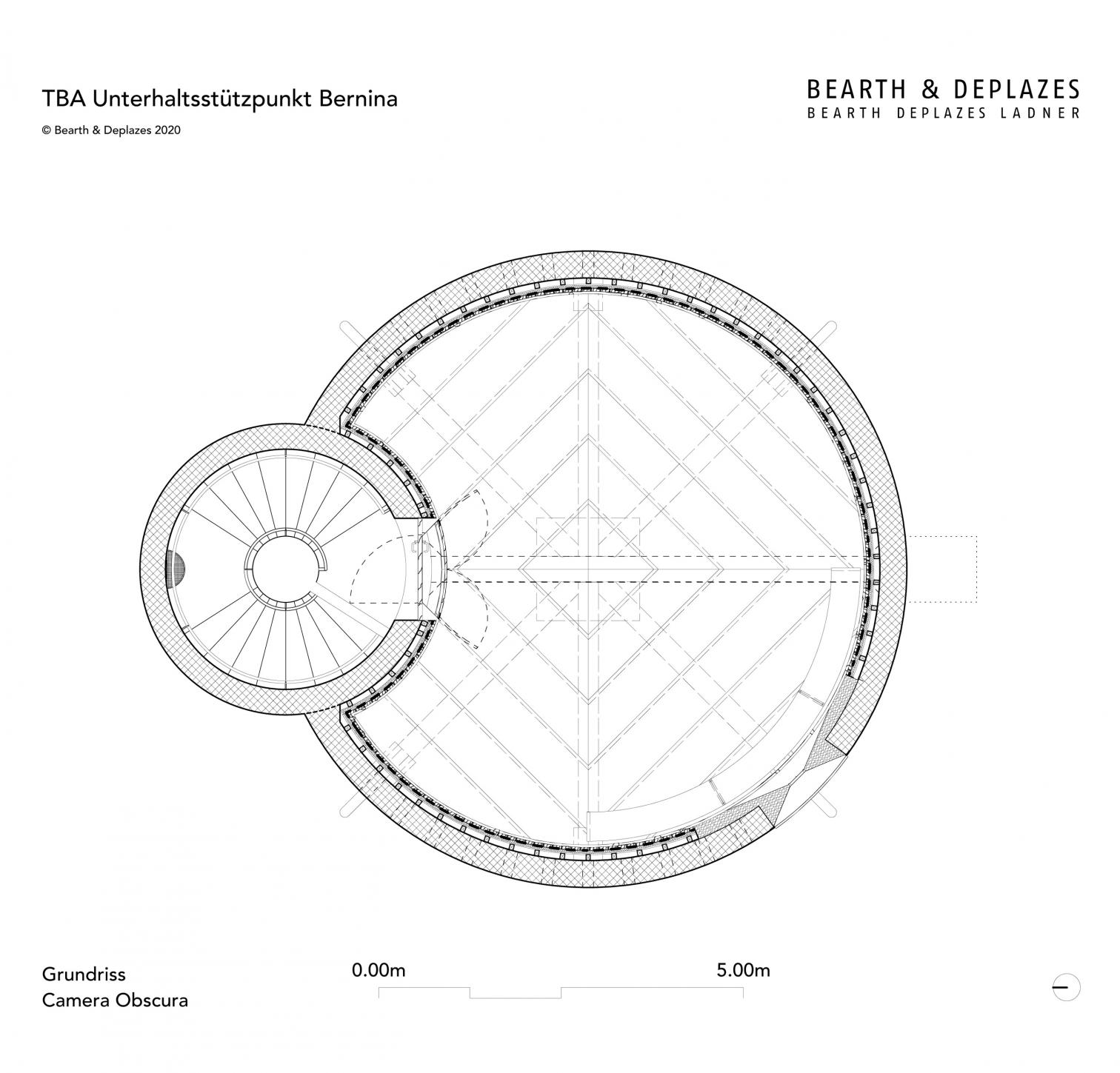
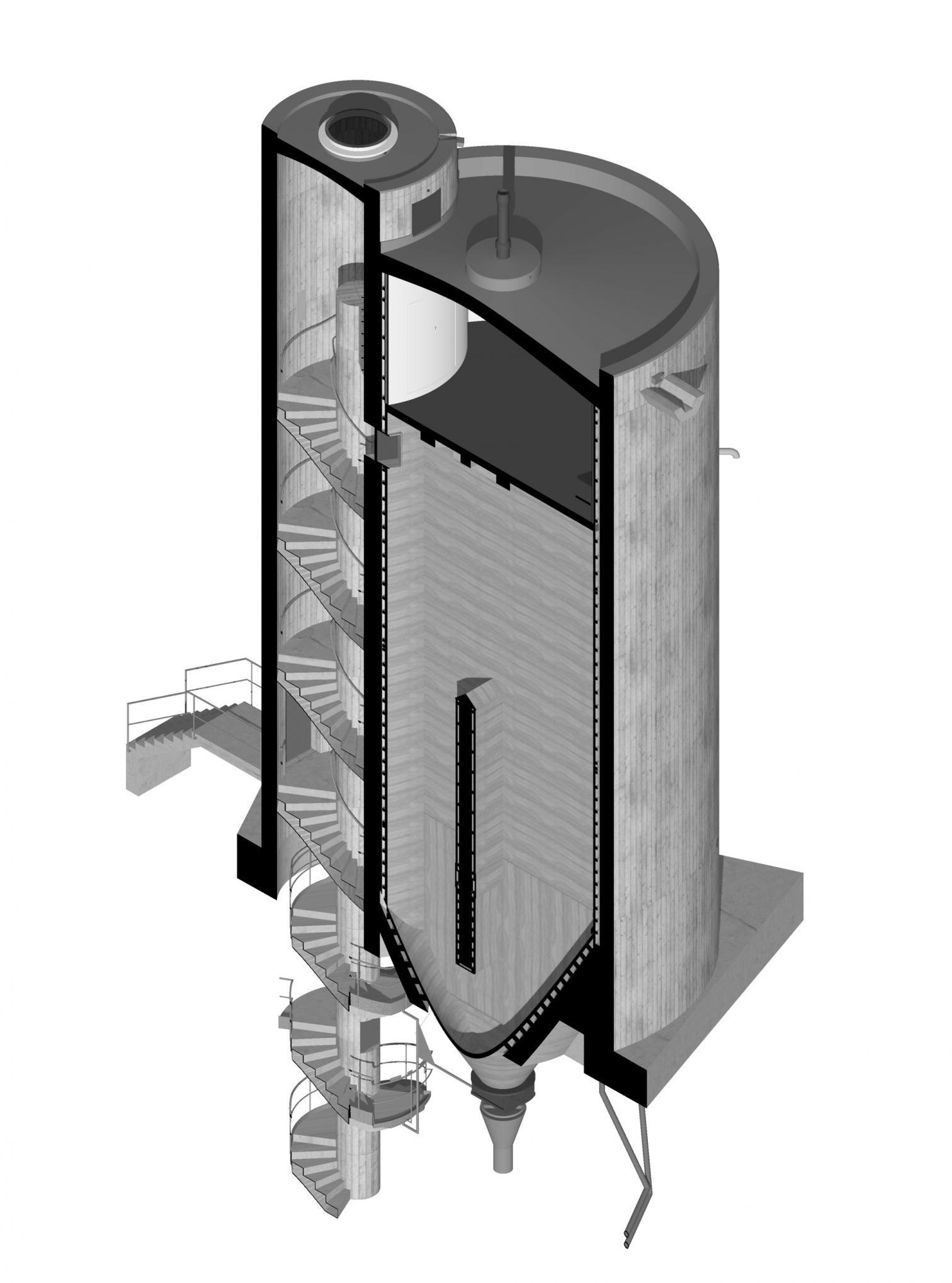
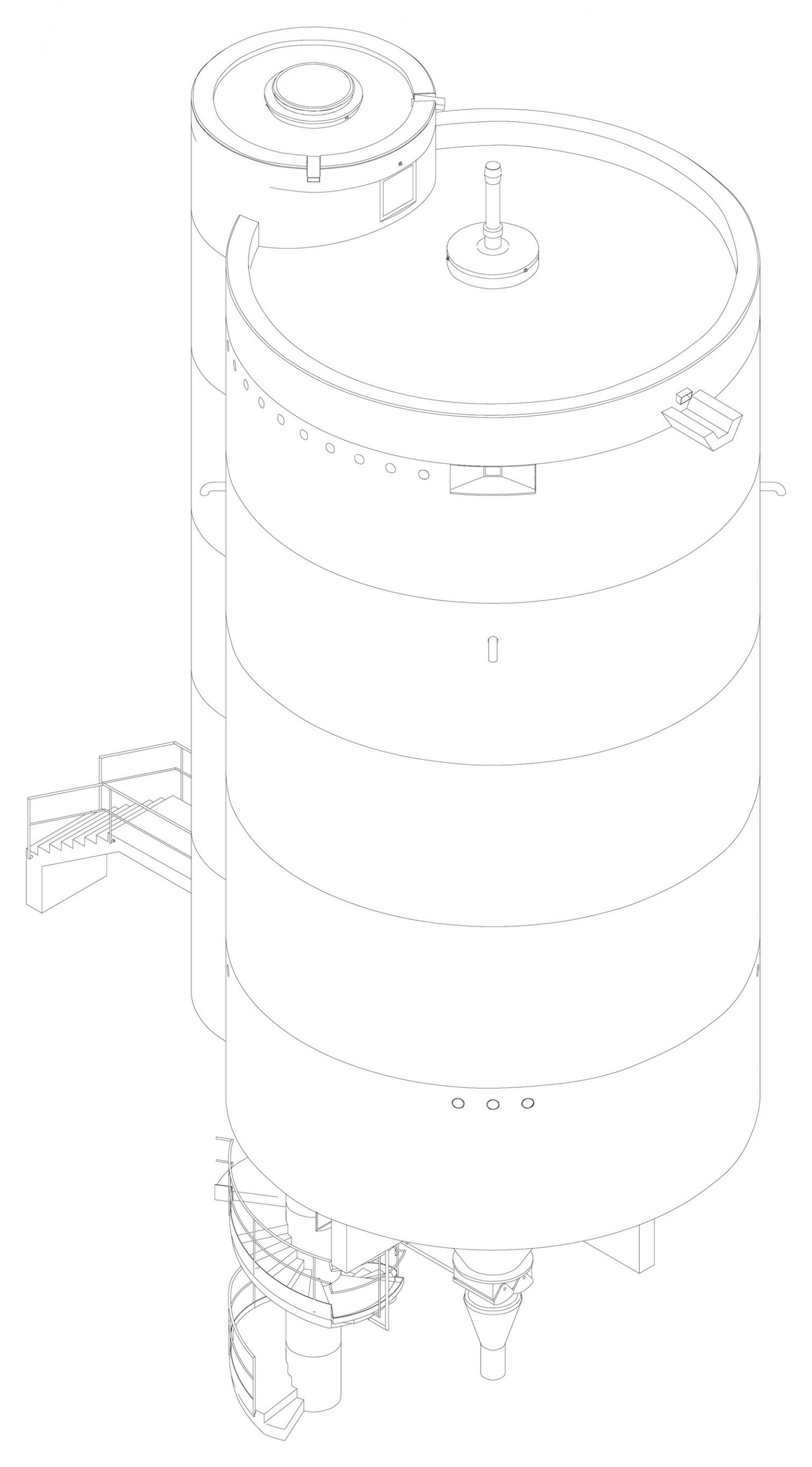
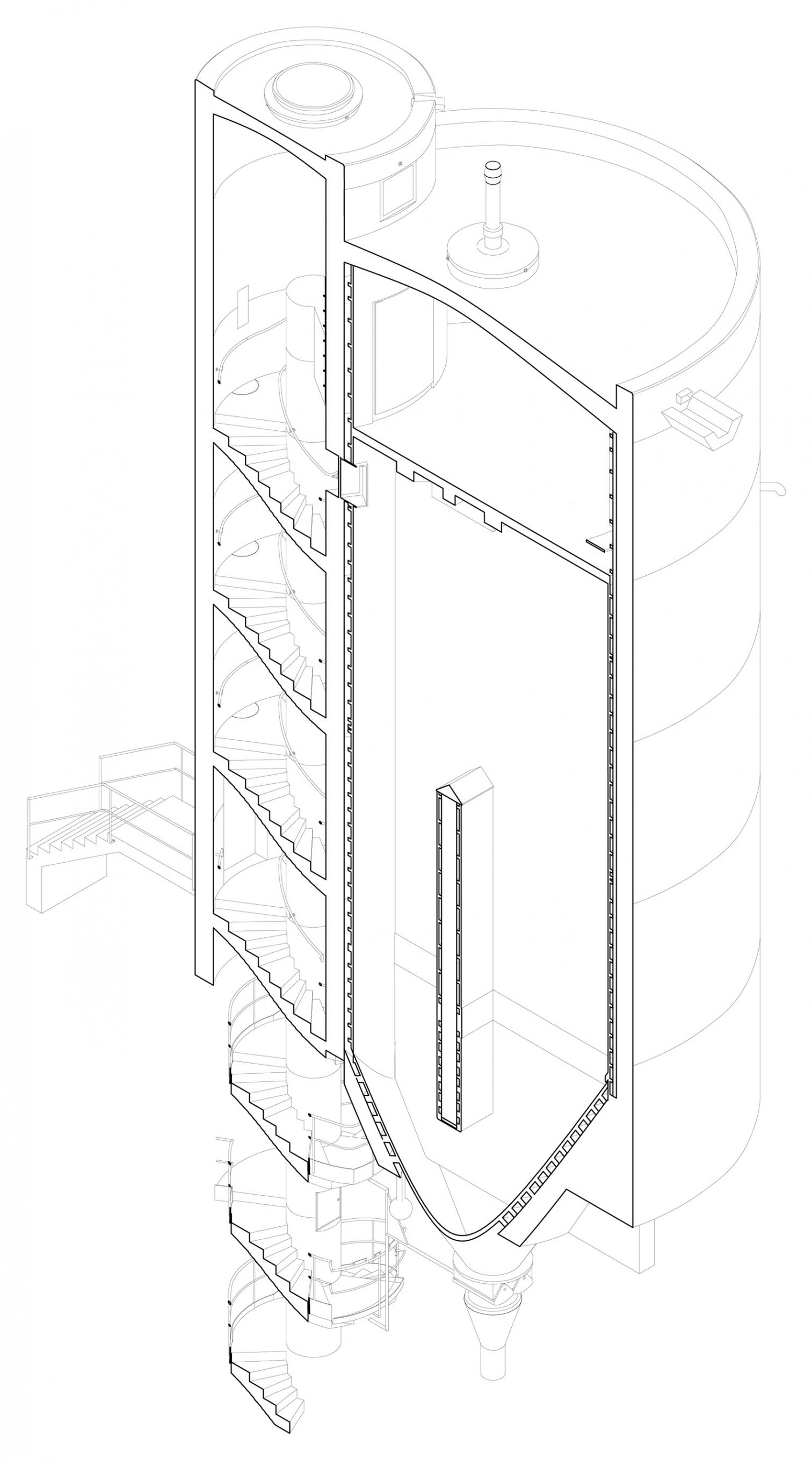
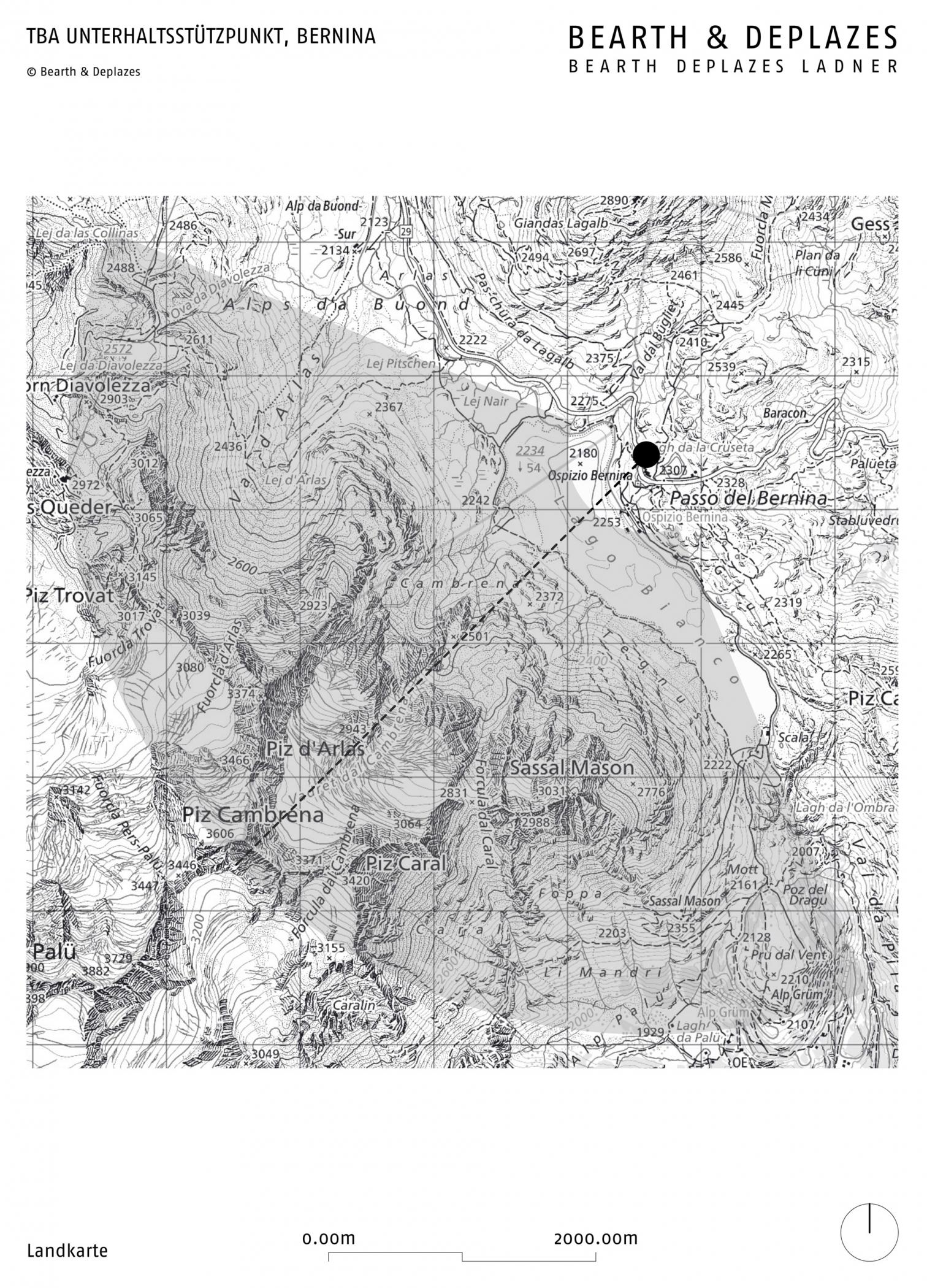
- Typologies Infraestructure
- Material Concrete
- Date 2019
- City Bernina
- Country Switzerland
- Photograph Guido Baselgia

